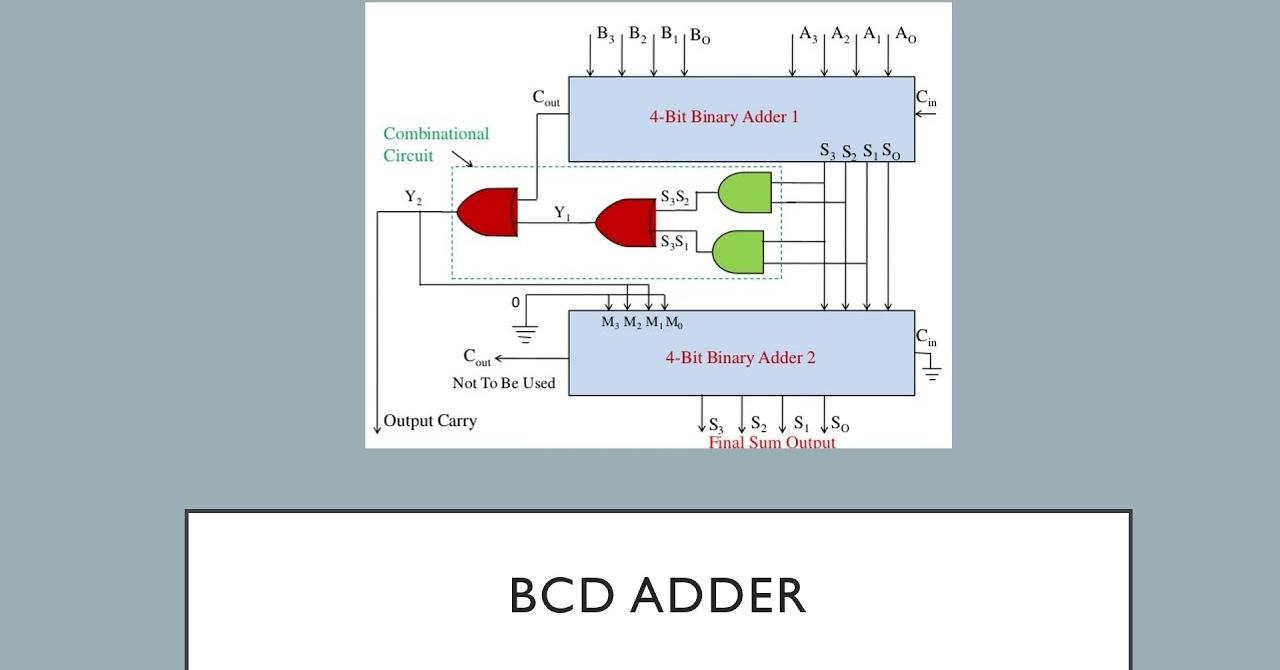Are you curious to know what is BCD adder? You have come to the right place as I am going to tell you everything about BCD adder in a very simple explanation. Without further discussion let’s begin to know what is BCD adder?
In the intricate landscape of digital electronics, the Binary-Coded Decimal (BCD) adder stands as a fundamental building block. This crucial component plays a pivotal role in arithmetic operations, specifically in adding binary-coded decimal numbers, contributing to the functionality of various computing devices and digital systems. Understanding the mechanics and significance of a BCD adder unveils its importance in the realm of digital circuits.
What Is BCD Adder?
A BCD adder is a specialized arithmetic circuit designed to perform addition specifically for Binary-Coded Decimal numbers. Binary-Coded Decimal is a binary representation of decimal numbers, where each decimal digit is represented by its binary equivalent using four bits. Unlike standard binary addition, which operates on binary numbers, a BCD adder handles BCD numbers to ensure accurate addition of decimal digits within a given range (0-9).
Functionality And Operation:
The primary function of a BCD adder is to add two BCD numbers and generate the correct BCD sum. It operates similarly to a binary adder but incorporates additional logic to handle carry propagation and ensure proper alignment of decimal digits.
BCD addition involves processing each decimal digit individually, with the output constrained to the BCD representation. When adding two BCD digits, if the sum exceeds 9 (in decimal), a correction is applied to maintain the BCD format, accounting for carry-over to the next higher-order digit.
Components And Implementation:
BCD adders are typically constructed using logic gates, such as AND, OR, and XOR gates, along with additional circuitry for handling carry operations and digit alignment. They can be implemented using various technologies, including integrated circuits (ICs), programmable logic devices (PLDs), or as part of larger arithmetic logic units (ALUs) in microprocessors.
Applications In Digital Systems:
The functionality provided by BCD adders finds extensive application in various digital systems, including calculators, cash registers, digital clocks, and data processing units. These systems often involve arithmetic operations on decimal numbers, necessitating the use of BCD arithmetic to maintain accuracy and compatibility with human-readable decimal representations.
Furthermore, BCD addition serves as a foundational concept in computer arithmetic, influencing the design of computational units in processors and contributing to efficient data manipulation in diverse computing applications.
Conclusion:
The Binary-Coded Decimal (BCD) adder stands as a fundamental component in digital circuits, facilitating accurate addition and manipulation of decimal numbers within the binary-coded framework. Its specialized design and operation ensure precision in handling decimal arithmetic, crucial for various computing devices and systems.
As digital technology continues to advance, the role of BCD adders remains significant in enabling accurate and efficient arithmetic operations, underscoring their importance in the intricate world of digital electronics and computing. Understanding the mechanics of the BCD adder unveils its role as a cornerstone in the foundation of digital arithmetic and computational systems.
FAQ
What Is The Full Form Of BCD?
Binary Coded Decimal is correct full form of BCD. In computing and electronic systems, binary-coded decimal (BCD) is a class of binary encodings of decimal numbers where each decimal digit is represented by a fixed number of bits, usually four or eight.
What Is BCD Code Addition Example?
Example: Perform BCD Addition of 6 and 7
BCD representation of 6 is given as 0110 and for 7 it is 0111. When we add 6 and 7 in BCD, we get 1101 which is an invalid state therefore, we add 0110 (6) to the sum to get correct result which is 0001 0011 (13).
What Is The Used Of BCD?
With BCD, coders represent every decimal digit with four to eight digits, often called bits, using only zero and one. For example, you could represent a decimal value of five in BCD as 0101. The goal of BCD is to make it simpler to convert human numbers into values that a machine can understand.
What Is BCD Adder Using 4-Bit Full Adder?
A 4-bit BCD Adder, adds two BCD inputs and a carry input, and generates a 4-bit Sum output in BCD and a carry output. A correction logic is required, to convert the binary sum to BCD sum.
I Have Covered All The Following Queries And Topics In The Above Article
What Is A BCD Adder
What Is BCD Adder In Digital Electronics
What Is BCD Adder Explain With Block Diagram
What Is Gand Food
Gand Disease Life Expectancy
Gand In Hindi Meaning
Gand Diagnosis
Gand Meaning In Hindi To English
पिछवाड़ा Meaning In English
Gand Mara Translate In English
Gand Meaning In Telugu
What Is BCD Adder
